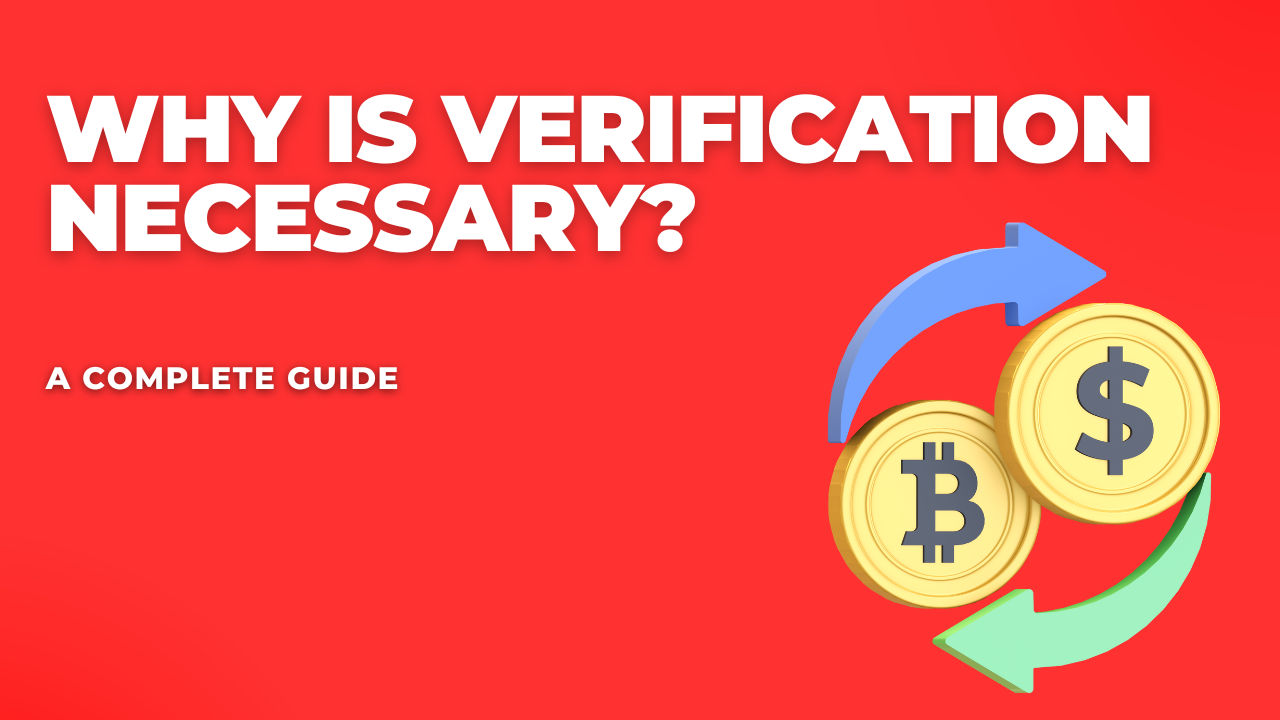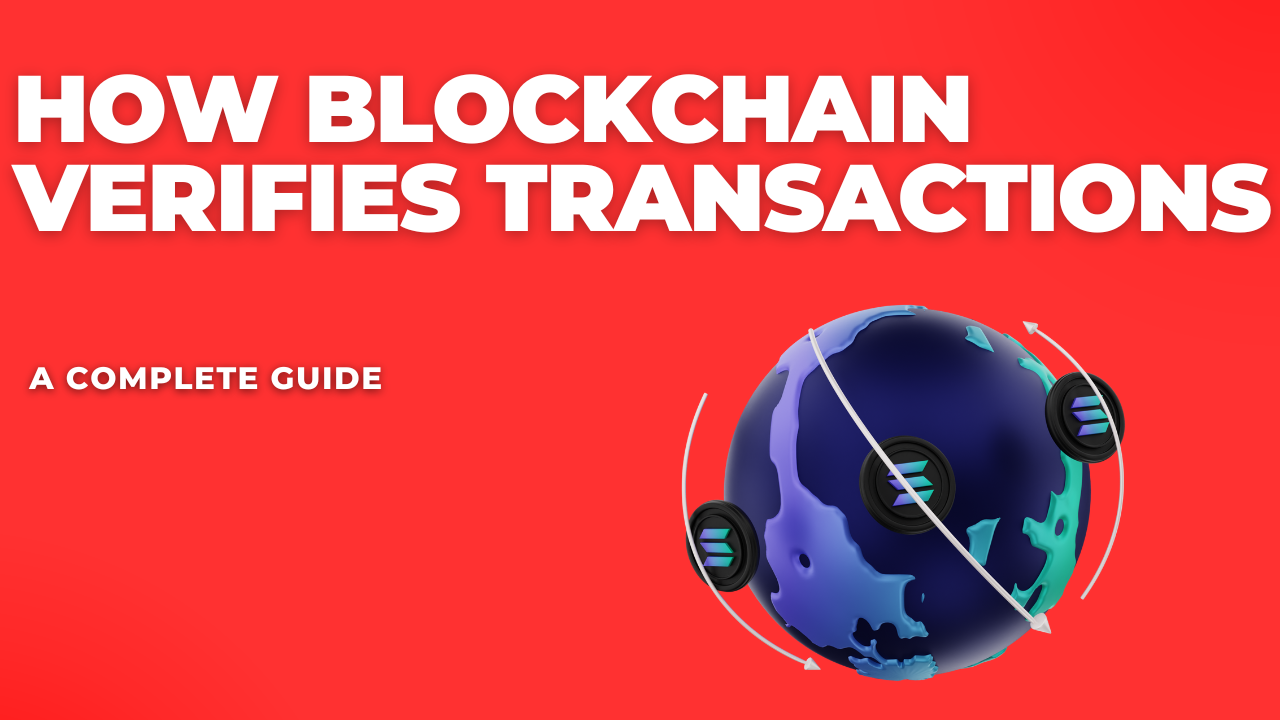Introduction to Cryptocurrency Transaction Verification
Cryptocurrency transaction verification is a key component of the digital currency network. Without a strong verification method, the honesty and safety of bitcoin networks would be compromised. Here’s an in-depth look at how this process works and why it’s so important.
What is Transaction Verification?
Transaction verification is the process through which cryptocurrency networks confirm that a transaction is legitimate before adding it to the blockchain. Unlike traditional financial systems, where banks or other intermediaries verify transactions, cryptocurrency relies on decentralized networks of computers (nodes) to perform this task. This decentralization is one of the core principles of cryptocurrencies, ensuring that no single entity has control over the entire network.
Why is Verification Necessary?
Verification is crucial for maintaining trust in the cryptocurrency system. It ensures that the sender has enough funds, prevents double-spending (the risk of the same coin being spent twice), and confirms that the transaction follows the rules of the network. Without this process, the network could be vulnerable to fraud, and users would lose confidence in the system.
The Role of Blockchain in Verification
The blockchain is a distributed ledger that records all transactions across a network. When a transaction is initiated, it is broadcast to the network, where nodes compete to verify and add it to the blockchain. Once added, the transaction becomes part of the permanent and immutable ledger. This transparency and immutability are key to the trustworthiness of cryptocurrencies.
How Verification Works
- Transaction Broadcast: When a user initiates a transaction, it is broadcast to the entire network. This transaction includes details such as the sender’s and receiver’s wallet addresses, the amount, and a digital signature.
- Validation by Nodes: Nodes on the network receive the transaction and begin the process of validating it. This involves checking that the sender has enough balance, the transaction is properly signed, and it follows the network’s rules.
- Consensus Mechanism: The network reaches a consensus on the validity of the transaction through mechanisms like Proof of Work (PoW) or Proof of Stake (PoS). In PoW, miners solve complex mathematical puzzles to validate transactions, while in PoS, validators are chosen based on the amount of cryptocurrency they hold and are willing to “stake” as collateral.
- Block Addition: Once validated, the transaction is grouped with others into a block. This block is then added to the blockchain, where it is permanently recorded.The more approvals an exchange has, the more secure it may be rated.
Key Components of Verification
- Digital Signatures: Ensure the transaction is initiated by the rightful owner.
- Consensus Algorithms: Secure the network and prevent fraud.
- Mining/Validation: Miners or validators play a crucial role in confirming transactions and maintaining the blockchain.
The Role of Blockchain in Transaction Verification
Blockchain technology is at the heart of how cryptocurrency transactions are verified. It acts as the digital ledger that records every transaction, ensuring transparency, security, and trust within the network. Let’s explore how the blockchain functions and its critical role in the transaction verification process.
Understanding Blockchain Technology
A blockchain is essentially a distributed ledger that is shared across a network of computers, known as nodes. Each block in the chain contains a list of transactions that have been validated and confirmed. Once a block is added to the chain, it becomes a permanent part of the ledger, and altering it is virtually impossible. This immutability is a key feature that makes blockchain technology secure and reliable.
How Blockchain Verifies Transactions
-
Transaction Initiation:
- A transaction begins when a user sends cryptocurrency from one wallet to another. This transaction is then broadcast to the entire network of nodes. Each transaction includes details such as the sender’s and recipient’s wallet addresses, the amount of cryptocurrency being transferred, and a digital signature that verifies the sender’s identity.
-
Transaction Validation by Nodes:
- Once the transaction is broadcast, nodes on the network begin the process of validation. They check that the transaction meets the necessary criteria, such as confirming that the sender has enough funds in their wallet to complete the transaction. Nodes also verify that the digital signature is valid and that the transaction adheres to the rules of the network.
-
Consensus Mechanism:
- After validation, the network must agree on the transaction’s validity. This agreement is reached through a consensus mechanism, which is a critical part of how blockchain technology functions. The most popular consensus techniques are Proof of Work (PoW) and Proof of Stake (PoS):
- Proof of Work (PoW) involves miners competing to solve complicated mathematical challenges. The first miner to solve the puzzle gets to add the new block of transactions to the blockchain and is rewarded with cryptocurrency. This process is energy-intensive but ensures that the network remains secure and decentralized.
- Proof of Stake (PoS): Validations are selected based on the quantity of coins they own and are prepared to “stake” as security. Validators are selected to propose and validate new blocks, and they earn rewards for their participation. PoS is less energy-intensive than PoW and is seen as a more sustainable alternative.
- After validation, the network must agree on the transaction’s validity. This agreement is reached through a consensus mechanism, which is a critical part of how blockchain technology functions. The most popular consensus techniques are Proof of Work (PoW) and Proof of Stake (PoS):
-
Block Creation and Addition:
- Once consensus is reached, the validated transactions are grouped into a block. This block is then added to the blockchain, becoming a permanent part of the ledger. Each block contains a unique code called a “hash” that links it to the previous block, creating a chain of blocks — hence the name “blockchain.” The hash ensures that even a small change in the block’s data would produce a completely different hash, making the blockchain highly secure against tampering.
-
Confirmation of Transactions:
- When a block is added to the blockchain, all transactions within it are considered confirmed. However, the more blocks that are added on top of it, the more secure the transaction becomes. For instance, in the Bitcoin network, a transaction is typically considered fully confirmed after six additional blocks have been added to the blockchain, making it nearly impossible to alter.
The Benefits of Blockchain in Verification
- Decentralization: No single entity controls the blockchain, ensuring that transactions are verified by the network collectively.
- Transparency: All transactions are recorded on the blockchain, making them visible to anyone with access to the network. This transparency fosters trust among users.
- Security: The immutable nature of the blockchain, combined with cryptographic hashing and consensus mechanisms, ensures that the data on the blockchain cannot be altered or tampered with, making it highly secure.
Blockchain’s Role in Different Cryptocurrencies
Different cryptocurrencies utilize blockchain technology in unique ways. For example:
- Bitcoin: Bitcoin relies on Proof of Work, where miners compete to add blocks to the blockchain, securing the network through computational power.
- Ethereum: Ethereum originally used Proof of Work but has transitioned to Proof of Stake with Ethereum 2.0, aiming to reduce energy consumption and increase scalability.
The Role of Miners and Validators
Miners and validators are critical participants in the transaction verification process, each playing distinct roles depending on the consensus mechanism used by the cryptocurrency network.
-
Miners (in PoW Systems):
In PoW-based systems like Bitcoin, miners are individuals or entities that use powerful computers to solve cryptographic puzzles. Their role is to validate transactions and group them into blocks. Once a block is successfully mined, it is broadcast to the network, and the first miner to solve the puzzle gets to add the block to the blockchain. Miners are incentivized with rewards in the form of newly created cryptocurrency and transaction fees.
-
Validators (in PoS Systems):
In PoS-based systems, validators are selected based on the amount of cryptocurrency they hold and are willing to stake. Validators propose and validate new blocks. They are chosen based on their stake and other factors, such as reputation and past performance. Validators earn rewards for their participation, and their staked funds are at risk if they act maliciously or fail to perform their duties.
Blockchain Nodes
Nodes are crucial components in the cryptocurrency network. They maintain copies of the blockchain and help in verifying and relaying transactions.
Full Nodes:
Full nodes store a complete copy of the blockchain and validate transactions independently. They ensure that transactions and blocks adhere to the network’s rules and propagate valid transactions throughout the network.
Light Nodes:
Light nodes do not store the entire blockchain but rely on full nodes for transaction validation and block data. They are used to provide access to the blockchain for users with limited resources, such as mobile devices.
Network Security Measures
To ensure the security of transaction verification, several additional measures are employed:
Cryptographic Hash Functions:
Cryptographic hash functions are used to create unique identifiers (hashes) for each block. These hashes ensure that even a small change in the block’s data would result in a completely different hash, making it nearly impossible to alter the blockchain.
Network Protocols:
Network protocols govern how transactions are broadcast, verified, and added to the blockchain. They ensure that nodes follow the same rules and maintain consensus on the blockchain’s state.
How Bitcoin Verifies Transactions
The Bitcoin transaction verification process is a complete, multi-step method that verifies the integrity and security of each transaction. This process leverages the principles of blockchain technology, mining, and consensus algorithms. Here’s a comprehensive look at how Bitcoin verifies transactions:
1. Transaction Initiation
When a user initiates a Bitcoin transaction, several key pieces of information are involved:
- Sender and Recipient Addresses: Each Bitcoin transaction requires a sender’s and a recipient’s Bitcoin address. These addresses are essentially cryptographic keys that represent users’ wallets.
- Amount: The amount of Bitcoin being transferred is specified in the transaction details.
- Digital Signature: The transaction is signed with the sender’s private key. This digital signature serves as proof that the sender authorizes the transaction and that it has not been tampered with.
2. Transaction Broadcasting
Once constructed, the transaction is sent to the Bitcoin network. This means that the transaction details are sent out to all nodes in the network for validation. Here’s what happens next:
- Propagation: Nodes in the network receive the transaction and begin the process of validation. The transaction is temporarily held in a pool known as the mempool, where it waits to be included in a new block.
- Initial Validation: Each node performs initial checks to ensure the transaction is correctly formatted, the digital signature is valid, and the sender has sufficient funds. These checks prevent invalid transactions from entering the network.
3. Block Creation and Mining
- Mining: Bitcoin transactions are grouped into blocks by miners. To create a new block, miners must solve a complex mathematical puzzle—a process known as Proof of Work (PoW). This puzzle involves finding a hash value that meets specific criteria. The first miner to solve the puzzle gets to propose the new block to the network.
- Block Validation: Once a miner proposes a new block, other nodes validate the block’s transactions. They check that each transaction within the block adheres to the Bitcoin protocol rules. This includes verifying digital signatures and ensuring no double-spending has occurred.
4. Consensus Mechanism
- Proof of Work (PoW): Bitcoin uses PoW as its consensus mechanism. In PoW, miners compete to solve the cryptographic puzzle.The complexity of this problem is adjusted on a regular basis to ensure that blocks are mined every 10 minutes. The first miner to solve the puzzle and successfully add the block to the blockchain is rewarded with new bitcoins and transaction fees.
- Block Confirmation: After a block is added to the blockchain, its transactions are considered confirmed. However, for increased security, further confirmations are required. Each subsequent block added to the blockchain confirms the previous block’s transactions, making them increasingly secure against tampering.
5. Double-Spending Prevention
One of Bitcoin’s major concerns is preventing double-spending, which is the risk of a user spending the same Bitcoin more than once. Here’s how Bitcoin addresses this issue:
- Blockchain Ledger: The blockchain acts as a public ledger that records all transactions. Once a transaction is added to a block and confirmed, it becomes part of the permanent record. This ledger ensures that any attempt to spend the same Bitcoin again would be easily detected and rejected by the network.
- Consensus Protocol: The consensus protocol ensures that all nodes agree on the current state of the blockchain. If a double-spending attempt is made, the network will reject the fraudulent transaction as it conflicts with the existing blockchain records.
6. Transaction Fees
Bitcoin transactions often include a transaction fee, which is paid to miners as an incentive for their work. The cost amount may vary depending on:
- Transaction Size: Larger transactions or those with more complex scripts may require higher fees to be processed quickly.
- Network Demand: During times of high network congestion, users may offer higher fees to prioritize their transactions.
Miners prioritize transactions with higher fees, ensuring that transactions are processed efficiently even when the network is busy.
7. Security Measures
Several security measures are in place to protect the Bitcoin network and its transactions:
- Cryptographic Hash Functions: Bitcoin uses the SHA-256 hash function to secure transaction data and link blocks together. This cryptographic hashing ensures that any alteration to a block’s data would result in a different hash, making tampering nearly impossible.
- Bitcoin is decentralised which suggests that no single entity has control over the network.This distribution of power helps prevent fraud and attacks, as an attacker would need to control a majority of the network’s computational power to alter transaction records.





